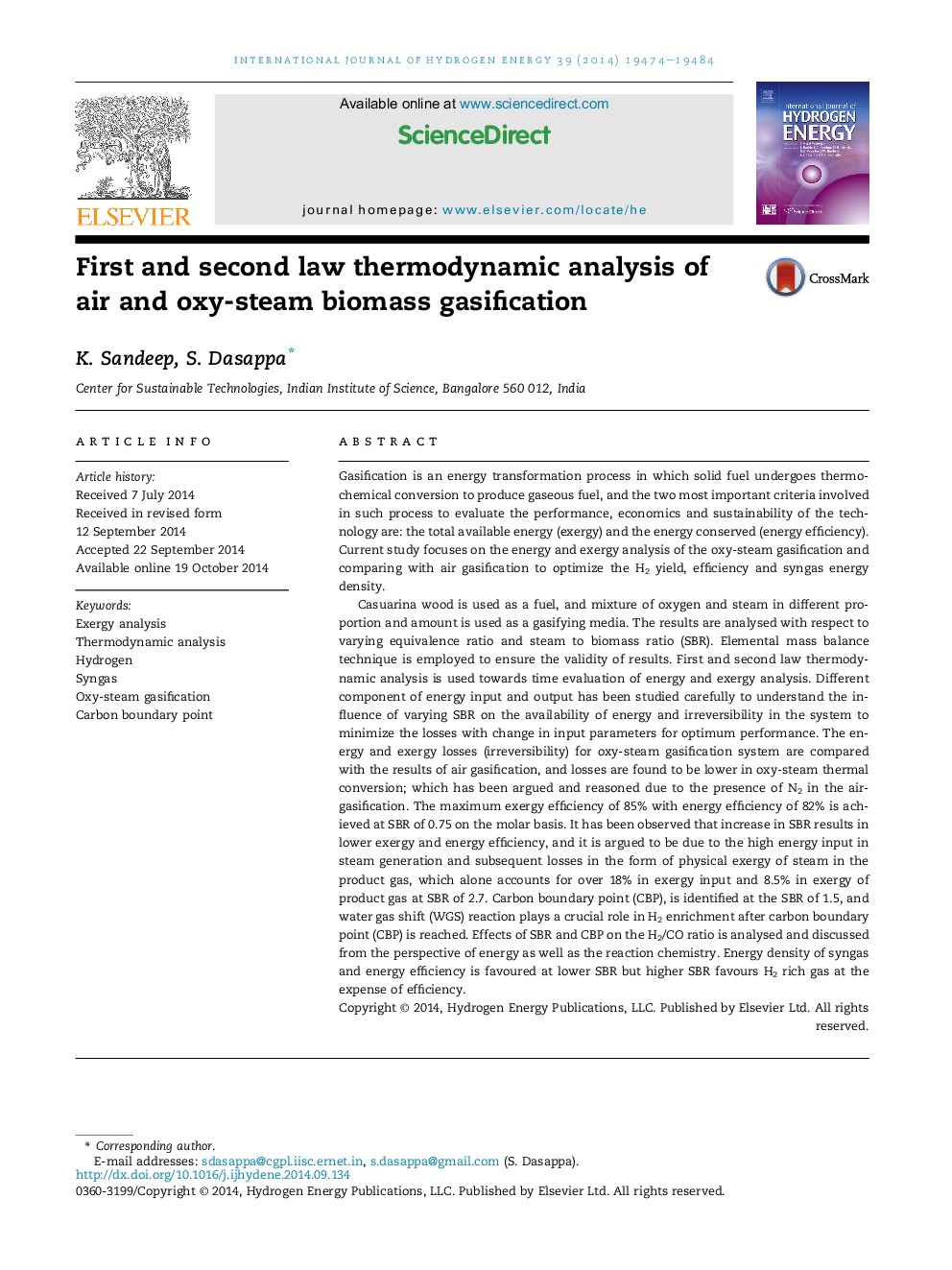| کد مقاله | کد نشریه | سال انتشار | مقاله انگلیسی | نسخه تمام متن |
|---|---|---|---|---|
| 1280699 | 1497475 | 2014 | 11 صفحه PDF | دانلود رایگان |
• Energy and exergy analysis of biomass gasification with air or O2–H2O mixture.
• Downdraft fixed bed reactor configuration for autothermal biomass gasification.
• Evaluating exergy and energy efficiency varying process parameters, SBR and ER.
• Comparison in efficiency of air and oxy-steam gasification.
• Identifying the carbon boundary point in oxy-steam gasification.
Gasification is an energy transformation process in which solid fuel undergoes thermochemical conversion to produce gaseous fuel, and the two most important criteria involved in such process to evaluate the performance, economics and sustainability of the technology are: the total available energy (exergy) and the energy conserved (energy efficiency). Current study focuses on the energy and exergy analysis of the oxy-steam gasification and comparing with air gasification to optimize the H2 yield, efficiency and syngas energy density.Casuarina wood is used as a fuel, and mixture of oxygen and steam in different proportion and amount is used as a gasifying media. The results are analysed with respect to varying equivalence ratio and steam to biomass ratio (SBR). Elemental mass balance technique is employed to ensure the validity of results. First and second law thermodynamic analysis is used towards time evaluation of energy and exergy analysis. Different component of energy input and output has been studied carefully to understand the influence of varying SBR on the availability of energy and irreversibility in the system to minimize the losses with change in input parameters for optimum performance. The energy and exergy losses (irreversibility) for oxy-steam gasification system are compared with the results of air gasification, and losses are found to be lower in oxy-steam thermal conversion; which has been argued and reasoned due to the presence of N2 in the air-gasification. The maximum exergy efficiency of 85% with energy efficiency of 82% is achieved at SBR of 0.75 on the molar basis. It has been observed that increase in SBR results in lower exergy and energy efficiency, and it is argued to be due to the high energy input in steam generation and subsequent losses in the form of physical exergy of steam in the product gas, which alone accounts for over 18% in exergy input and 8.5% in exergy of product gas at SBR of 2.7. Carbon boundary point (CBP), is identified at the SBR of 1.5, and water gas shift (WGS) reaction plays a crucial role in H2 enrichment after carbon boundary point (CBP) is reached. Effects of SBR and CBP on the H2/CO ratio is analysed and discussed from the perspective of energy as well as the reaction chemistry. Energy density of syngas and energy efficiency is favoured at lower SBR but higher SBR favours H2 rich gas at the expense of efficiency.
Journal: International Journal of Hydrogen Energy - Volume 39, Issue 34, 20 November 2014, Pages 19474–19484
